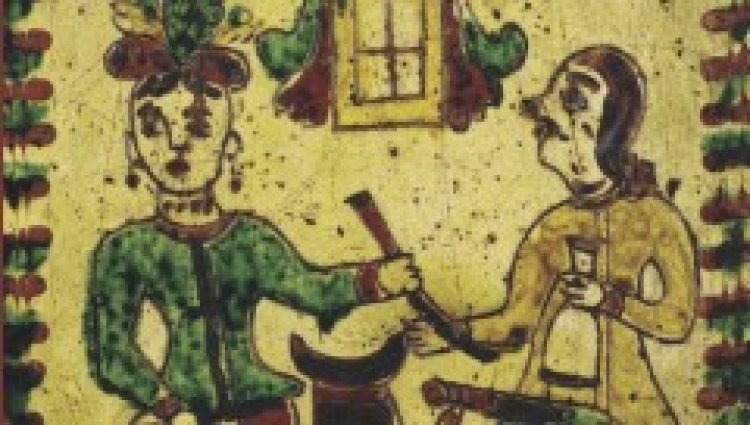A book presentation: "Inventing the Obscene. The Hidden Collections of Fedir Vovk"
"Krytyka" Publishing House and "Feminist Critique" Journal are glad to invite you to a new book presentation "Inventing the Obscene: the Hidden Collections of Fedir Vovk (the Ethnography of Sexuality in the Late 19th and Early 20th Century)" edited by Maria Mayerchyk and Olena Boriak.
Lavrska Str.,10-12, Kyiv «Papir» Hall 14:00 - 14:45
The book comprises an archive of Ukrainian, Russian and Jewish bawdy folklore and invectives collected at the turn of the 20th century by Fedir Vovk (1847–1918), a well-known Ukrainian archaeologist, ethnographer and anthropologist who emigrated from the Russian Empire in 1879 and lived in Paris since 1887. The material was collected for the "Kρυπταδια: Recueil de documents pour servir à l’étude des traditions populaires" (1883–1911), a Paris-based multilingual annual that specialized in publishing the “obscene” folklore of different ethnic groups.
Vovk assembled and edited three collections of materials and published them in volumes V (“Folklore de l’Ukraine” and “Folklore de La Grande Russie”, 1898) and VIII (“Folklore de l’Ukraine”, 1902) of the Kρυπταδια. The publications included ritual and lyric songs, poems, tales, anecdotes, proverbs, and invectives. This volume contains critically annotated material partly reconstructed and translated from French and Yiddish collections of Ukrainian, Russian and Jewish folklore published in the two volumes of Kρυπταδια. In addition it contains the obscene folklore collected by Volodymyr Hnatyuk, Borys Hrinchenko, Vasyl Stepanenko and Oleksandr Rusov, well-known Ukrainian folklorists who in the late 19th and early 20th century sent their manuscripts to Vovk for publication in the Kρυπταδια; this material, however, was not published and remained in Vovk’s archive.
An introductory chapter “Erotic Folklore” as a Discursive Category by Maria Mayerchyk presents a conceptual framework for a scholarly rethinking of how and why the “ethnography of sexuality” emerged as a new discipline at the turn of the 20th century. The reference material in the appendices contains commentary, indexes of words and texts as well as indexes of geographical and personal names.


Join the Discussion!